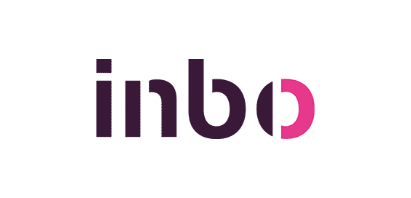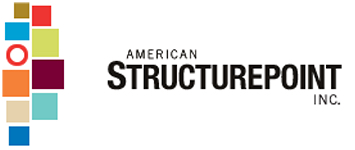
Replacing 125 workstations at 6 global sites with centralised virtual desktops running NVIDIA GRID
Inbo Architecten is an independent, leading company in the field of urban consultancy, urbanism, architecture and architectural engineering located in the Netherlands and China. Inbo delivers inspirational and sustainable solutions for various design tasks.
“We approach our work from an integral point of view,” explained Rien Schouten, IT Coordinator. “A total of eight groups form the base from which we are able to offer our clients the full range of consultancy, urbanism, and architectural engineering. Each group is a specialist in its own field, independently providing the energy and personal approach while together they form the driving force of a larger practice.”
Challenge
Inbo has offices in the Netherlands and China. The Netherlands offices are in Amsterdam, Eindhoven,Herenveen, Rotterdam, and Woudenberg, and the China office is located in Shanghai. Over 80% of the employees in these offices are designers and building engineers who require high- performance hardware to carry out their daily tasks. The ongoing evolution to larger and more complex 3D models placed growing demands on CPUs, storage, and GPUs.
These demands drove continual investments in upgrading expensive workstations. In addition, the geographically diverse workforce needed a way to improve collaboration while better controlling and managing access to data across the Inbo network.
“In 2012 we started thinking about a new workplace concept (InboN@ work),” said Rien. “It should be possible for all our staff to work and collaborate from different places, including from our clients’ offices and from home. That concept required a redesign of our IT environment.”

Solution
Inbo decided to launch a pilot VDI project for 10 internal and external users that centralized data storage and processing on a server and granted access to virtual desktops via the internet, all under the control and management of the IT department. This pilot allowed Inbo to test how well their office applications, production design packages (Autodesk® AutoCAD and Revit, Trimble® Sketchup), and Adobe® Creative Suite (Photoshop, InDesign, & Illustrator) performed in a virtualised environment.
NVIDIA GRID K2 delivered better performance than the workstations Inbo Architecten was using pre-implementation.
CAD & Company is an Autodesk Gold Partner that has provided Inbo with CAD application support for many years. The two companies reached out to London-based IMSCAD for help deploying a Citrix virtualisation solution. IMSCAD is a longtime leader in developing design software for use with Citrix, giving them both the necessary virtualisation skills and the practical experience in virtualising CAD applications for globally distributed user bases. This background, combined with knowledge gained from supporting live production environments and conducting comprehensive testing for Autodesk and NVIDIA, made IMSCAD the ideal choice to support Inbo with this project.
The pilot used an existing HP DL380 server with an NVIDIA Quadro 2000 professional graphic card. Citrix XenDesktop provided the Windows Desktop user interface, and XenApp provided the virtualised CAD and design applications. Virtualising the office applications delivered good performance and was deemed successful; however, GPU restrictions limited the scalability of the CAD applications.
“The Pilot proved that CPU powered virtual desktops were working fine,” Rien continued, “but applications like Revit and Sketchup needed more graphics power. With our focus on BIM and the increased use of Revit, this would be key factor in our decision when purchasing the new hardware infrastructure.”

Photo courtesy of Auke van der Weide
“By doing the migration step by step, we had time to solve any issues that we found with new technology and our existing software. So, with good preparation, all of the successive locations had a smooth migration and happy users. IMSCAD supported this process and were able to guide us on technology developments like NVIDIA GRID, which became integral to the success of our project.”
Inbo’s 2012 expansion to a new office in Heerenveen provided the perfect opportunity to implement virtualisation in a controlled production environment using HP DL380 servers to support 12 users.
Going forward, Inbo selected the HP S6500 chassis because it offers the required scalability with a minimal footprint. This was deployed using HP SL250s nodes with NVIDIA GRID K2 GPU boards to provide the platform for virtualising the CAD and design applications. XenDesktop provided the virtual desktops, and four XenApp virtual machines were then set up on each server to support up to 20+ users running Autocad Revit and Sketchup, Adobe CS, Solibri, and other CAD and BIM viewer software.
“The functionality provided by the GRID GPUs meant that we could support 40 design users per physical host. This gave us the scalability we needed, increasing our Return on Investment and reducing our Total Cost of Ownership, these were key metrics for approval from our Financial Director,” Rien said.
Results
All 125 users at all six Inbo locations migrated to virtual desktops and centralized data storage in 2013. Since then, inter-office collaboration has improved dramatically. Centralized data storage has eliminated data duplication and version control problems. The IT department manages user access, adding and removing users as needed during a project lifecycle to facilitate enterprise mobility and provide secure third-party collaboration. Designers and building engineers can work at any time and from any location using almost any desktop or mobile device. For example, they can present their projects using Apple® iPads®.
“Easy access through a secure website portal was highly appreciated for allowing users to work fast from anywhere they desired,” explained Rien. “The new Virtual Desktop Infrastructure actually performs far better than the old workstations that they used before.
“Under our InboN@work strategy, we now can provide users with low cost thin clients in the office, support their own devices (BYOD), and allow home working capabilities. This has improved productivity across the whole business,” Rien proudly declared. “But for me, personally, the biggest benefit has been increased efficiency within IT management.
“Managing our Application Portfolio across 125 workstations on 6 sites was always a huge issue. The regular release of Service Packs, patches, fixes, and upgrades can now be actioned once centrally, then delivered to all users at the touch of a button. In the future, we will stay close to this technology; this is just the start of many new possibilities for us.”


Rien Schouten, IT Coordinator, Inbo Architecten




